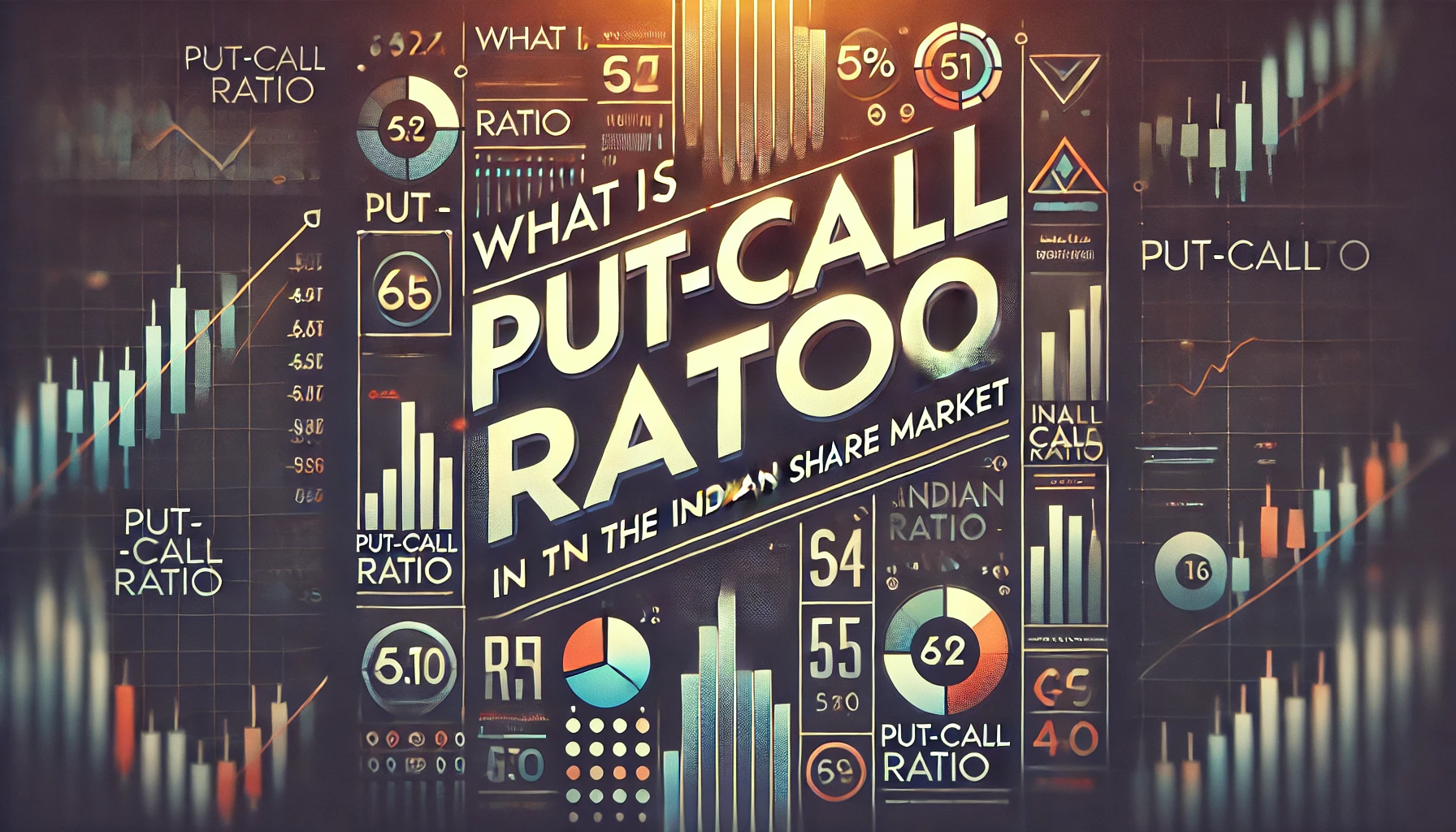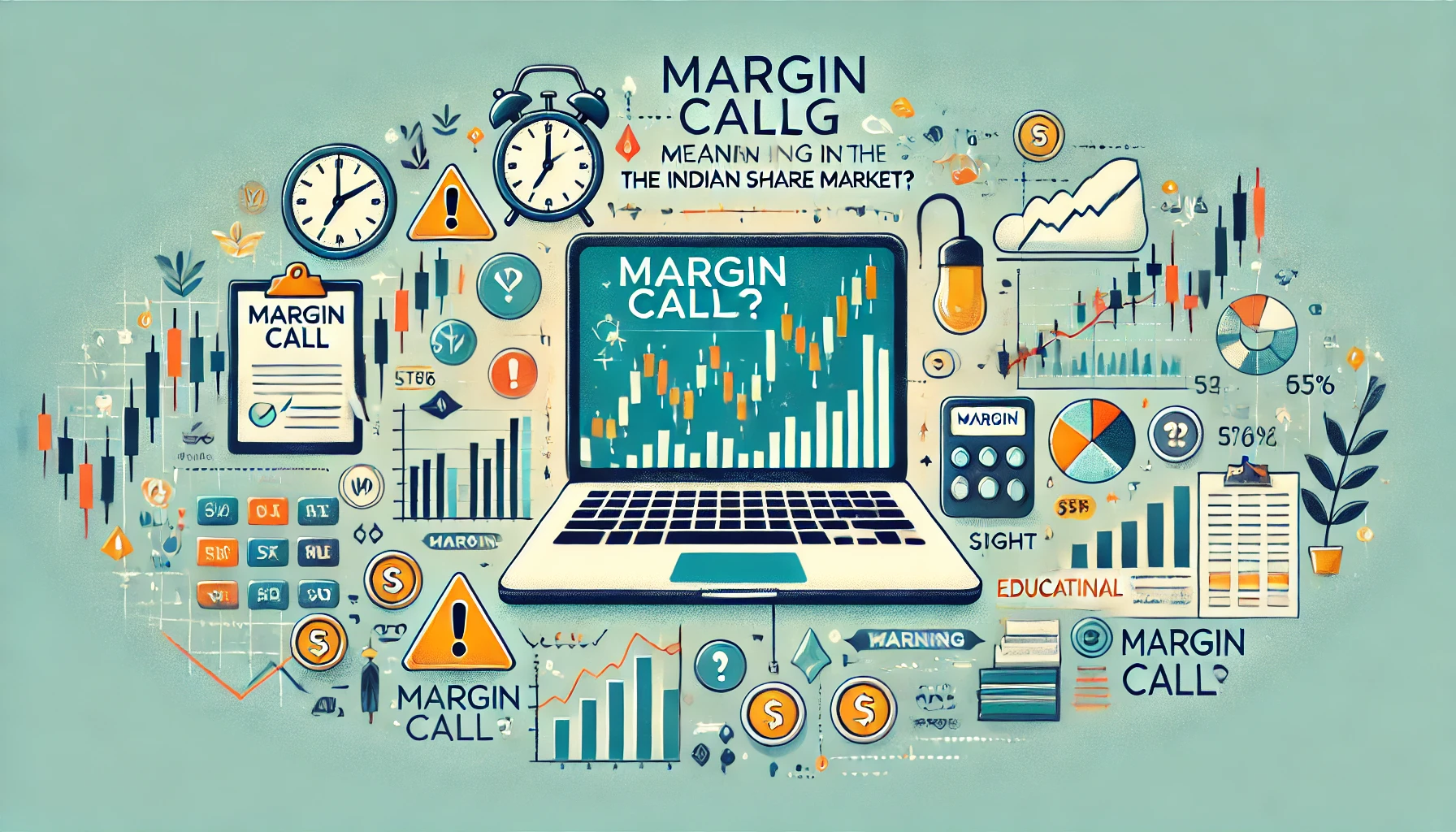The Indian derivatives market has grown exponentially, becoming a vital tool for investors and traders to hedge risks, speculate, and enhance portfolio performance. Derivatives are financial contracts that derive their value from an underlying asset, such as stocks, indices, currencies, or commodities. They allow participants to lock in future prices, manage risks, and take speculative positions without owning the actual asset.
In this blog, we will delve into the types of derivatives available in India, their benefits, and how they are used in real-world scenarios. We will also explore the growth of the Indian derivatives market, with historical data illustrating its expansion.
Table of Contents
- Introduction to Derivatives
- Types of Derivatives in India
- Futures
- Options
- Forwards
- Swaps
- Futures Contracts in India
- Options Contracts in India
- Forwards Contracts: Customized Risk Management
- Swaps: Managing Interest Rates and Currency Risks
- Historical Data on the Growth of Derivatives in India
- Significance of Derivatives in the Indian Share Market
- Conclusion
1. Introduction to Derivatives
Derivatives are financial instruments that derive their value from an underlying asset. They are widely used in the financial markets to hedge risks, increase leverage, and enhance returns. Derivatives can be classified into several categories, each serving different purposes depending on market conditions, participants’ goals, and risk management needs.
In India, the most commonly traded derivatives are futures and options on stocks and indices. The growth of the derivatives market in India has provided traders with various tools to hedge risks, engage in arbitrage, or take advantage of market volatility.
2. Types of Derivatives in India
The derivatives market in India offers a range of products for different market participants. The most common types of derivatives are:
a. Futures: Standardized contracts that obligate the buyer to purchase, and the seller to sell, an underlying asset at a specified future date and price.
b. Options: Contracts that give the holder the right, but not the obligation, to buy or sell the underlying asset at a predetermined price before a specified date.
c. Forwards: Customized contracts between two parties to buy or sell an asset at a specified price and future date, traded OTC (over-the-counter).
d. Swaps: Contracts between two parties to exchange cash flows, typically involving interest rates or currencies.
Each derivative serves different purposes, from hedging and risk management to speculation.
3. Futures Contracts in India
Futures are standardized contracts to buy or sell an underlying asset at a specified future date. Futures contracts in India are traded on regulated exchanges such as the National Stock Exchange (NSE) and Bombay Stock Exchange (BSE). These contracts exist for individual stocks, indices, commodities, and even currencies.
Table: Key Stock Futures in India (2020-2023)
| Year | NIFTY Futures Volume (in million contracts) | Reliance Futures Volume (in million contracts) |
|---|---|---|
| 2020 | 980 | 200 |
| 2021 | 1100 | 220 |
| 2022 | 1250 | 240 |
| 2023 | 1380 | 260 |
Futures are popular among traders looking to hedge their positions or speculate on the future price movements of an asset. For example, a trader might buy NIFTY futures if they expect the index to rise in the future.
4. Options Contracts in India
Options are another vital derivative in India, allowing traders to hedge risk or speculate on market movements with lower initial capital. An option gives the holder the right, but not the obligation, to buy (call option) or sell (put option) the underlying asset at a predetermined price.
- Call Option: The right to buy the asset.
- Put Option: The right to sell the asset.
Table: Options Trading Volumes in India (2020-2023)
| Year | NIFTY Options Volume (in million contracts) | Bank NIFTY Options Volume (in million contracts) |
|---|---|---|
| 2020 | 1250 | 800 |
| 2021 | 1400 | 900 |
| 2022 | 1550 | 1050 |
| 2023 | 1700 | 1200 |
Options are widely traded in the Indian market, particularly for NIFTY and Bank NIFTY. They provide flexibility as traders can limit their risk to the premium paid for the option while potentially benefiting from large price movements.
5. Forwards Contracts: Customized Risk Management
Forwards are similar to futures but are customized contracts between two parties, usually traded OTC. Forwards are typically used by companies and financial institutions to hedge risks related to foreign exchange, commodities, or interest rates.
For example, an Indian exporter may enter into a forward contract to sell USD in the future to lock in today’s favorable exchange rate. Unlike futures, forwards are not standardized, allowing the parties to customize the contract terms.
Table: Growth in Forwards Contracts in India (2019-2023)
| Year | Total Forwards Contracts (in ₹ billion) |
|---|---|
| 2019 | 450 |
| 2020 | 480 |
| 2021 | 510 |
| 2022 | 540 |
| 2023 | 580 |
Forwards provide more flexibility than futures but carry higher counterparty risk since they are not cleared through an exchange.
6. Swaps: Managing Interest Rates and Currency Risks
Swaps are derivative contracts where two parties exchange cash flows. The most common swaps in India are interest rate swaps and currency swaps.
- Interest Rate Swaps (IRS): These involve exchanging fixed interest rate payments for floating rate payments, or vice versa, to hedge interest rate risk.
- Currency Swaps: These allow parties to exchange cash flows in different currencies, useful for businesses engaged in international trade.
Table: Swaps Market in India (2019-2023)
| Year | Interest Rate Swaps Volume (₹ trillion) | Currency Swaps Volume (₹ trillion) |
|---|---|---|
| 2019 | 25 | 8 |
| 2020 | 28 | 10 |
| 2021 | 31 | 12 |
| 2022 | 34 | 14 |
| 2023 | 36 | 15 |
Swaps are primarily used by financial institutions and corporates to manage large exposures to interest rate fluctuations and currency risk.
7. Historical Data on the Growth of Derivatives in India
The Indian derivatives market has seen explosive growth over the last two decades, fueled by the increasing need for risk management, rising financial literacy, and the introduction of more sophisticated financial products.
Table: Growth in Total Derivatives Volume (2019-2023)
| Year | Total Derivatives Volume (in million contracts) |
|---|---|
| 2019 | 4500 |
| 2020 | 5000 |
| 2021 | 5600 |
| 2022 | 6200 |
| 2023 | 6800 |
The expansion of the derivatives market has provided Indian investors and traders with a broader range of tools to manage risks, speculate on future price movements, and diversify their portfolios.
8. Significance of Derivatives in the Indian Share Market
Derivatives have become indispensable tools for traders and investors in India. They offer various advantages, such as:
- Risk Management: Derivatives allow participants to hedge against unfavorable price movements.
- Leverage: With a relatively small initial investment, traders can take larger positions using derivatives.
- Price Discovery: Futures and options markets help in the discovery of future prices for stocks, commodities, and currencies.
- Liquidity: The derivatives market in India is highly liquid, particularly in popular indices like NIFTY and Bank NIFTY, making it easier to enter and exit trades.
9. Conclusion
The Indian share market offers a diverse range of derivatives, including futures, options, forwards, and swaps, each with its unique characteristics and benefits. Understanding the types of derivatives available is crucial for traders and investors looking to hedge risks, speculate on price movements, or diversify their portfolios.
With the continued growth of the Indian derivatives market and the increasing sophistication of financial products, participants have more tools than ever to navigate the complexities of the financial landscape.

What Is Implied Volatility?
In the realm of Indian share market derivatives, implied volatility (IV) plays a crucial role …

What is Margin Funding?
Margin funding is a powerful tool in the Indian share market that allows traders to …

Forward vs Future contract
In the Indian share market, derivatives such as forward and future contracts play a pivotal …

What is Margin Money?
Margin money is a crucial aspect of trading in the Indian share market, especially in …

What is Put-Call Ratio?
The Put-Call Ratio (PCR) is one of the most widely used indicators in options trading …

What is Derivatives?
Derivatives are financial instruments whose value is derived from an underlying asset or benchmark. In …

What is Cost of Carry?
The cost of carry is an essential concept in futures trading that reflects the cost …

What is futures
Futures are a fundamental part of derivatives trading in the Indian stock market. They allow …

Bullish Option Strategies
In the ever-evolving world of derivatives trading, options have become a powerful tool for investors …

Understanding Physical Settlement in Futures & Options Contracts: A Comprehensive Guide
In the world of derivatives trading, the concept of physical settlement has gained prominence, particularly …

what are call options
The Indian share market has expanded significantly over the years, attracting a growing number of …

What Is Credit Spread Strategy
In the world of options trading, the credit spread strategy is one of the most …

What Is a Forward Contract
A forward contract is a customized financial agreement between two parties to buy or sell …

Types of Derivatives in India
The Indian derivatives market has grown exponentially, becoming a vital tool for investors and traders …

What is Swaps Derivatives
In the world of derivatives, swaps are a special class of contracts that allow two …

Intrinsic Value and Time Value of Options
Options trading is one of the most widely used financial instruments in the Indian share …

What is Open Interest?
In the world of derivatives, the concept of “Open Interest” plays a crucial role in …

Types of underlying assets in derivatives
The Indian derivatives market has grown exponentially over the last few decades, thanks to its …

derivatives on Option Volatility & Pricing Strategies
The Indian share market derivatives segment is a dynamic environment where advanced traders rely heavily …

What is Futures Contract
The Indian share market offers various financial instruments that provide opportunities for investors and traders. …

What is implied volatility in options?
In the world of options trading, one of the most crucial elements to understand is …

Futures Pricing Formula
The Indian share market is known for its dynamic nature and offers various opportunities for …

What is an ITM Call Option?
The world of options trading is filled with technical terms that are crucial for investors …

What is Max Pain Theory?
The Indian share market is full of strategies and theories that traders use to predict …

What is OTM Call Options
In options trading, terms like “in the money” (ITM), “at the money” (ATM), and “out …

What Is Rollover
Rollover is a common term in the world of futures and derivatives trading, especially in …

Futures Prices Converge Upon Spot Prices
In the world of financial markets, futures contracts play a significant role. One of the …

Call Ratio Back Spread
In the Indian share market, advanced trading strategies such as the Call Ratio Back Spread …

Margin Call Meaning
A margin call is one of the most critical warnings in trading, often marking a …

What is Bermuda Option?
The financial markets are full of complex instruments, and one such tool is the Bermuda …


















